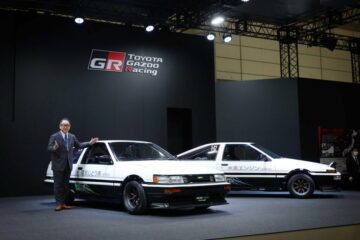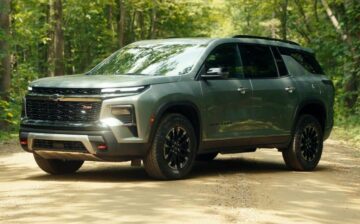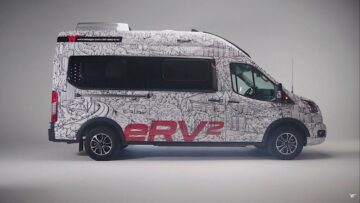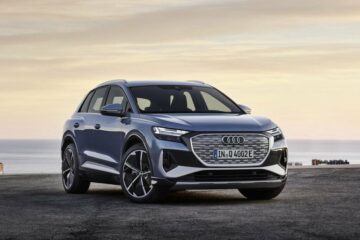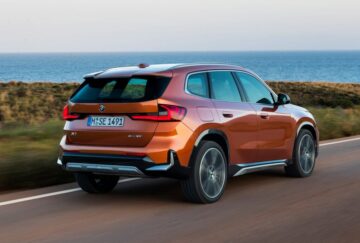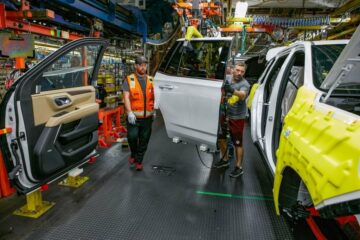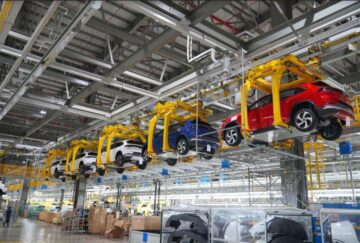General Motors Co. and United States Steel Corp., two of the nation’s old line industrial companies, are teaming up on an initiative to produce and utilize “sustainable” steel with 75% fewer emissions and 90% recycled material.

“This agreement is an example of how we are innovating with our suppliers to create lower-emission products for our customers,” said Jeff Morrison, GM vice president of Global Purchasing and Supply Chain.
“It also highlights how strong supplier relationships can help build a better future,” Morrison said.
GM continues to purchase steel from several different suppliers, according to spokesman Dan Flores.
The deal calls for GM to utilize what U.S. Steel describes as its advanced steel solution called VerdeX steel.
Steel to come from new mill

The steel U.S. Steel will supply GM will be manufactured at Big River Steel, a new LEED facility that also meets the ResponsibleSteel Standard site certification, along with a new advanced technology mill under construction in Osceola, Arkansas.
The steel produced at the site will begin shipping to GM manufacturing facilities later this year, according to U.S. Steel.
With its advanced techniques, steel is manufactured with up to 75% fewer emissions compared to traditional blast furnace production. It is made with up to 90% recycled content and can be recycled indefinitely without degradation.
For decades, automakers the world over had insisted on steel made from raw iron ore, which was considered purer and had fewer imperfection than cold-rolled steel made from scrap iron.
Broader industry effort to clean up
But the automotive market has shifted as carmakers began calling for lighter weight steels, which could compete with aluminum, and steel makers have adapted with new techniques and new classifications such as VerdeX.
“We are pleased to join GM in its mission to promote a world with zero emissions by providing such an advanced and sustainable steel product,” said U. S. Steel Senior Vice President and Chief Commercial Officer, Ken Jaycox.
“As part of our Best for All strategy, we are committed to helping our customers reduce their carbon footprint by providing American-made advanced steel products that are manufactured with fewer emissions and can be recycled repeatedly,” Jaycox added.
Jaycox added the VerdeX steel offers both the advantages of advanced high strength steel and low manufacturing emissions.
When complete, U. S. Steel’s $3 billion Big River facility will use advanced technology to expand production of sustainable advanced high-strength and electrical steels, including expanding its VerdeX steel offering which will be widely available to manufacturers and can help lower their carbon footprint, Jaycox said.
Industry responds
The quest to reduce steel’s carbon footprint is a response to the regulatory and political pressure on old line industries such as steel and autos to reduce their pollution. It is also remaking the U.S. industrial base making it cleaner and less dependent than ever on traditional sources of energy such as coal.
U.S. Steel was the first North American steel company to join ResponsibleSteel, a global not-for-profit working to make steel more sustainable. U.S. Steel was the first American steelmaker to announce a net-zero greenhouse gas emissions goal by 2050.
The website for ResponsibleSteel notes the organization, which is international in scope, is in the process of developing additional requirements for the responsible sourcing of input materials and greenhouse gas emissions.
Certification against these additional requirements will only be possible if sites are also meeting the existing ResponsibleSteel Standard, according to the site.
For its part, GM is pushing to reduce emissions from its own factories by eliminating completely the use of electric power generated from coal and replacing it with renewable energy. The company recently said it had already secured sufficient renewable energy to power 100% of our U.S. sites by 2025, a full 25 years ahead of our initial target of 2050.
- SEO Powered Content & PR Distribution. Get Amplified Today.
- Platoblockchain. Web3 Metaverse Intelligence. Knowledge Amplified. Access Here.
- Source: https://www.thedetroitbureau.com/2023/02/gm-u-s-steel-opt-for-cleaner-approach-to-clean-metal/
- $3
- a
- According
- adapted
- added
- Additional
- advanced
- Advanced Technology
- advantages
- against
- Agreement
- ahead
- All
- American
- and
- Announce
- approach
- arkansas
- automakers
- automotive
- available
- base
- began
- BEST
- Better
- Big
- Billion
- build
- Building
- called
- calling
- Calls
- carbon
- carbon footprint
- Certification
- chain
- chief
- Coal
- come
- commercial
- committed
- Companies
- company
- compared
- compete
- complete
- completely
- considered
- construction
- content
- continues
- Corp
- could
- create
- Customers
- deal
- decades
- dependent
- developing
- different
- effort
- Electric
- eliminating
- Emissions
- energy
- EVER
- example
- existing
- Expand
- expanding
- facilities
- Facility
- factories
- First
- Footprint
- from
- full
- future
- GAS
- generated
- Global
- GM
- goal
- greenhouse gas
- Greenhouse gas emissions
- help
- helping
- High
- highlights
- How
- HTTPS
- in
- Including
- industrial
- industries
- industry
- initial
- Initiative
- innovating
- input
- International
- IT
- join
- lighter
- Line
- Low
- made
- make
- Makers
- Making
- manufactured
- Manufacturers
- manufacturing
- Market
- material
- materials
- max-width
- meeting
- Meets
- metal
- Mission
- more
- Motors
- moving
- Nations
- net-zero
- New
- North
- Notes
- offering
- Offers
- Officer
- Old
- organization
- own
- part
- plato
- Plato Data Intelligence
- PlatoData
- pleased
- political
- Pollution
- possible
- power
- president
- pressure
- process
- produce
- Produced
- Product
- Production
- Products
- promote
- providing
- pumping
- purchase
- purchasing
- Pushing
- quest
- Raw
- recently
- reduce
- regulatory
- Relationships
- Renewable
- renewable energy
- REPEATEDLY
- Requirements
- response
- responsible
- River
- Said
- scope
- Secured
- senior
- several
- Shipping
- site
- Sites
- solution
- Sources
- Sourcing
- standard
- States
- steel
- Strategy
- strength
- strong
- such
- sufficient
- suppliers
- supply
- supply chain
- sustainable
- Target
- teaming up
- techniques
- Technology
- The
- the world
- their
- this year
- to
- toward
- traditional
- u.s.
- under
- United
- United States
- use
- utilize
- Vice President
- Website
- weight
- What
- which
- widely
- will
- without
- working
- world
- year
- years
- zephyrnet
- zero


